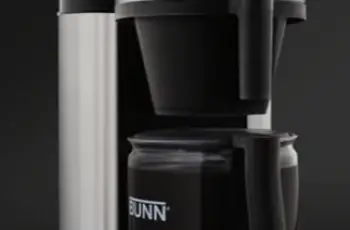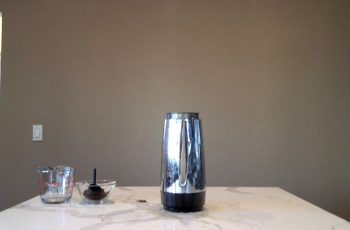You’ve done your homework, scoured through numerous reviews, and finally decided on a coffee maker. However, the coffee it produces has a disappointing flavor – almost as though you’re drinking coffee made from plastic, doesn’t it?
The coffee maker owners of the least expensive and most outrageous prices are experiencing the same problems. There is hope since there are ways to combat this issue. Let us, however, start by exploring WHY you smell and taste plastic when it comes to your coffee maker.
Why Your Coffee Tastes Like Plastic
If you think it is just the taste that tastes like bitter-plastic, while it is more than just the taste since the plastics are not even close to edible or innocuous.
Those plastics that contain BPA are known as hard plastics.
If you found a BPA recycling number on the water reservoir of your coffee maker, it likely contains BPA. The plant-derived hormone disruptor BPA has been used as a synthetic estrogen since the 1930s. That is right. The plastic is getting hard due to induced artificial estrogen.
In our homes, we are inhaling estrogen from plastics because of the BPA in them. The BPA does not always stay bound within the plastic. A class of chemicals known as phthalates is another hormone disruptor. Phthalates are a real problem when it is coffee makers because hot water is more likely to dissolve them.
Also, the hypothesis is that some people are predisposed to tasting certain chemicals while others are not. Have you ever tried to taste a certain chemical bitterness on a strip in your middle school biology class? Most likely, it’s something like that. But this is a rare possibility.
The Measures To Bring-in
Since your coffee maker is brewing the coffee with a plastic taste, you would need a long term solution to get rid of that bitter-toxic plastic taste from your coffee. Here, let us tell you some measures on how could you manage to cleanse off on your own.
Step 1: Empty Your Coffee Maker
At first, flush out everything from the coffee maker: the water from the reservoir, coffee from the basket, and brewer.
Step 2: Use Vinegar And Water In Equal Quantity To Fill The Reservoir
You can now fill this reservoir with vinegar and water, one after another, in an equal proportion. Make sure that the level of the solution is high so that it cleanses thoroughly. Keep the alignment at about the third quarter of the reservoir without varying the vinegar-water ratio.
Step 3: Begin The Cleansing
There will be a cleaning button or flushing button on some machines. Press the button to start cleaning. Using the brewing buttons, activate the cleansing process. If your coffee maker does not have the designated cleansing mode, place a vessel beneath the output pipe to catch the wastewater.
Step 4: Repeat The Cleansing Process
Rinse the coffee maker thoroughly by filling the reservoir with water and following the same steps as before.
Step 5: Keep On Repeating The Process Until Complete Eradication Of The Plastic
These four steps can be repeated as many times as necessary until the plastic taste eliminates. It will finally be possible to drink coffee without the plastic taste blending into the brew.
How Can You Avoid This Mess In The First Place
Purchase a quality coffee maker instead of just anyone. Possibly the one which has a glass or a stainless steel water reservoir. Then, you will be able to put an end to plastic coffee cups right there, and I promise your nightmares will go away.
The plastic water reservoir of coffee makers is responsible for the plastic taste produced by coffee makers. Stainless steel reservoirs are immune to outgassing, whereas the plastic water reservoir used in cheaper coffee makers may suffer this issue.
High-end coffee makers with stainless steel reservoirs are less likely to taste plastic since they have stainless steel reservoirs. They don’t have to deal with it.
These coffee makers will not impart a plastic taste to your water since they don’t thermally heat water in plastic. They can be expensive, but this is an easy plight.
The Final Verdict
How to deal with plastic-tasting coffee is something you are familiar with now. Nevertheless, if you are cleaning the coffee maker more than five times, you may want to consider getting a BPA-free or stainless steel or a glass coffee maker as soon as possible.


